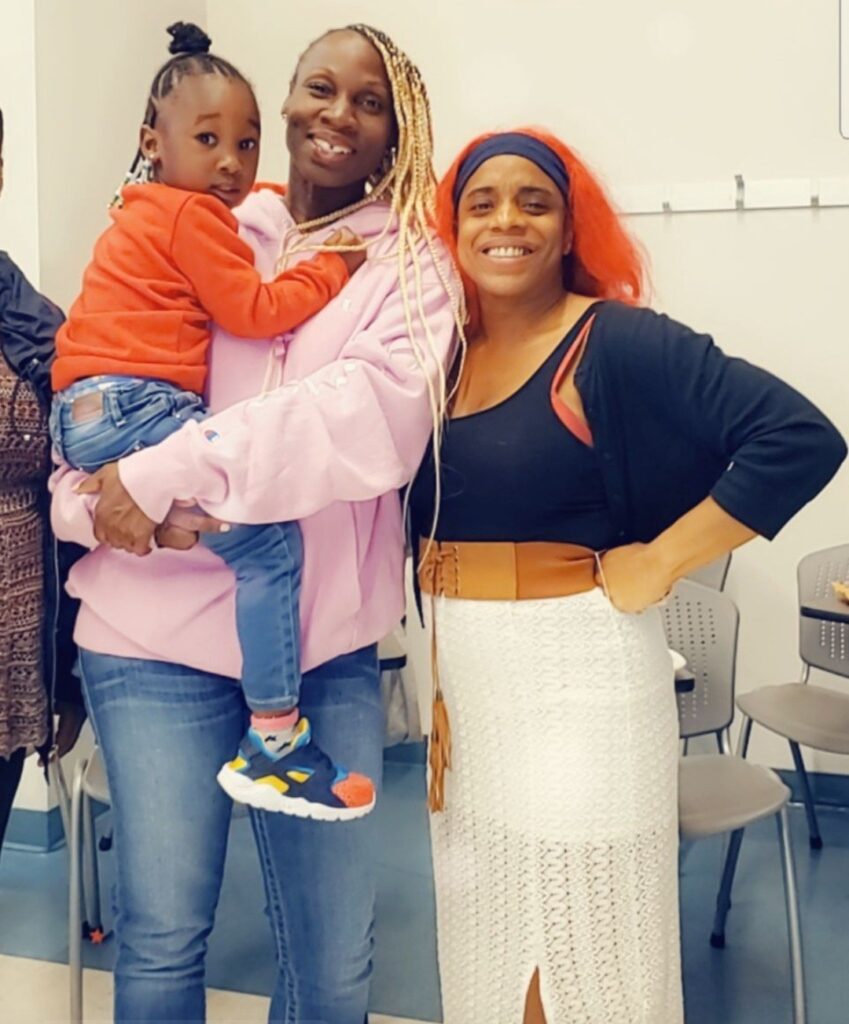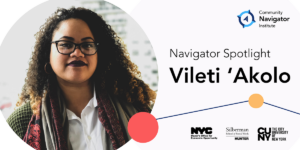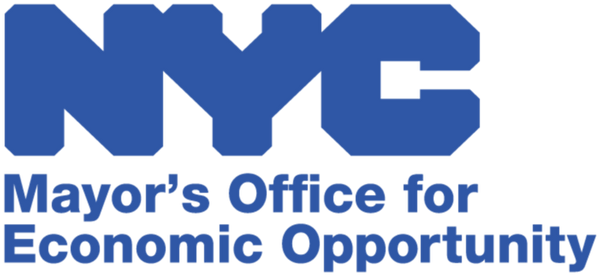The Navigator series spotlights staff in community-based organizations and mentors within peer workforce social service models. In our second feature, we are supporting the work of Shonique Hill, one of the facilitators leading the Community Navigator Institute.

“Service navigation builds the community. It allows community members to learn about the services available and hope they will pay it forward by sharing and helping someone else.”
Shonique Hill, Associate at the Community Navigator Institute
Tell us a little about yourself. What’s your current role? How long have you been working with the Community Navigator Program?
My name is Shonique Hill. I am a mom and a life-long community member of East Harlem. I attended school from elementary through high school in East Harlem as well. I was a part of the pioneer class at The Young Women’s Leadership School. Currently, I am an Associate with the Community Navigator Institute, where I provide support and perspective on what it is like to do on-the-ground navigation. I have been with the Community Navigator Program since its inception in October 2017. Working as a navigator taught me about social work/human services, and as a result, I plan to return to school to complete a bachelor’s degree in social work.
What initially sparked your interest in service navigation?
I have always been a person people come to for support and guidance. It has never felt like a job but a calling in my life that I take seriously. So when this opportunity presented itself, I thought, wow, I can get paid to do something I love. It felt like divine alignment, and I haven’t looked back since.
“Working in East Harlem has humbled me because I know how my people feel — I was and still am those people… It’s hard to trust systems when doors have been repeatedly closed, and you feel unwelcome.”
Shonique Hill, Associate at the Community Navigator Institute
Why is service navigation important?
Service navigation builds the community. It allows community members to learn about the services available and hope they will pay it forward by sharing and helping someone else. The goal is to uplift and empower the voices of the people. Because the truth is, without community, agencies cannot thrive. Remember to be for the people, the people have to want it.

What has your experience been like working in East Harlem? What are things you have learned from being in the community?
I was raised and rooted in East Harlem and have seen organizations come and go because of underutilization. I also saw those same agencies lose quality people because of insufficient funding. Knowing this helped me to see that to bridge the gap a middle man was needed (i.e., Navigator)! Working in East Harlem has humbled me because I know how my people feel– I was and still am those people. And because this community prides itself on not asking for help, I knew I needed to ensure that I created a safe and welcoming space. People needed to establish a trusting relationship with providers to make this a successful interaction, which was challenging to do in the past. It’s hard to trust systems when doors have repeatedly closed, and you feel unwelcome.
What are some exciting things that happened in Cohort 2 of the Community Navigator Institute?
Since this is Cohort 2, it is exciting to see the attendees’ participation. This time, we’ve learned our flow and how to support each other during the sessions. I’ve also enhanced my skills in group facilitating and collaboration.
What advice would you give to people who are interested in getting into social service navigation?
I would tell them to make it about building up the people. There is no harm in sharing information or asking for information. The work can be political, but as long as you know who you are and what you bring, don’t let that sway you. Stand in your truth and remember that your goal is to serve the people’s interests.
About the Navigator Spotlight Series
The Navigator series spotlights staff in community-based organizations, credible messengers, and mentors within peer workforce social service models. These individuals inspire us to think expansively about city services and the vital work happening within communities to connect people to services, programs, and supports.






